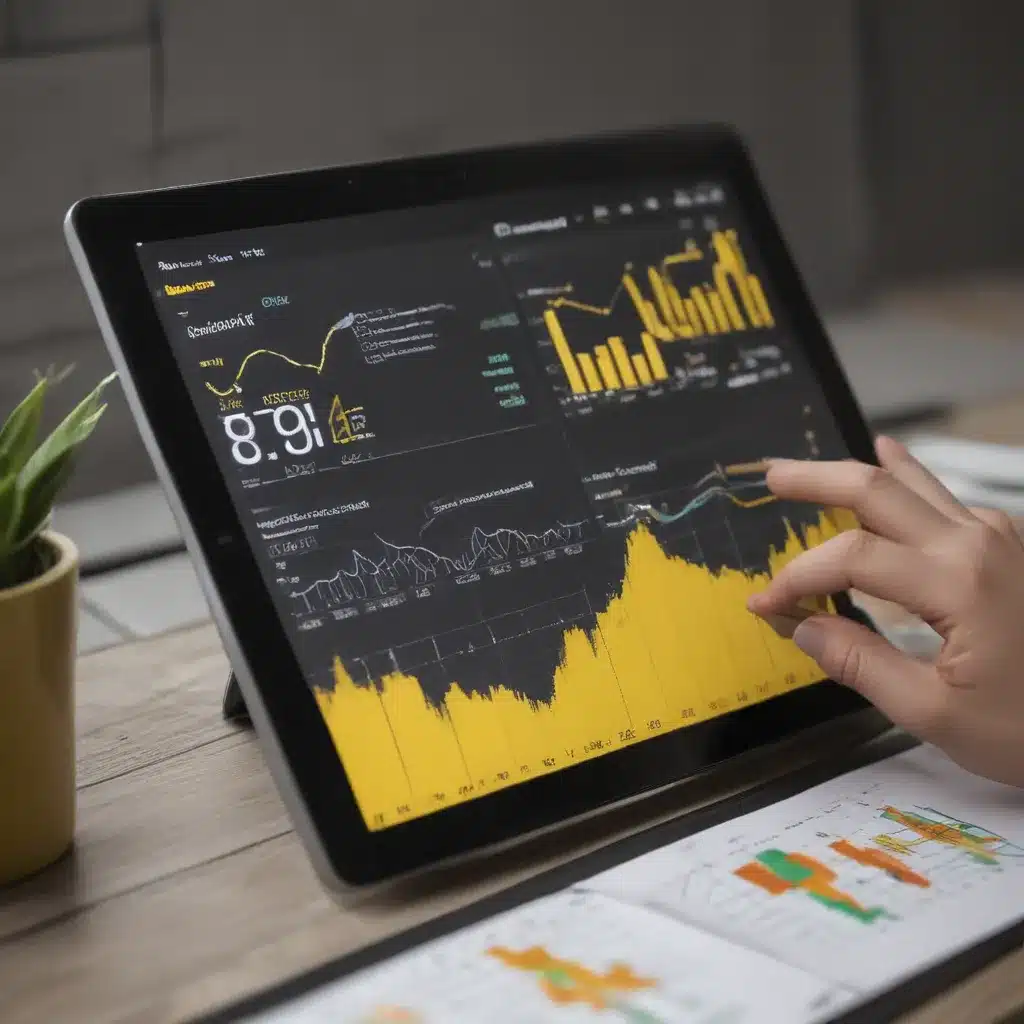Unlock the Power of Data Storytelling with Power BI
As a self-proclaimed data nerd, I can’t help but get giddy when I talk about the transformative power of Power BI. It’s like finding the missing puzzle piece that ties your entire analytics strategy together. Gone are the days of static, lifeless charts – Power BI empowers you to create dynamic, interactive visualisations that captivate your audience and bring your data to life.
Picture this: you’re presenting the latest sales figures to the executive team. Instead of flipping through a generic bar graph, you unleash a visually stunning dashboard that allows them to slice and dice the data in real-time. With a few clicks, they can dive deep into regional performance, compare product lines, and uncover hidden insights that inform critical business decisions. It’s like having a crystal ball that reveals the future, all through the magic of Power BI.
But don’t take my word for it – let’s explore the art of dynamic data visualisations and how you can harness this game-changing technology to elevate your data storytelling. [1] Buckle up, because you’re about to embark on a journey that will forever change the way you think about business intelligence.
Mastering the Art of Dynamic Visualisations
Picture this: you’re presenting the latest sales figures to the executive team. Instead of flipping through a generic bar graph, you unleash a visually stunning dashboard that allows them to slice and dice the data in real-time. With a few clicks, they can dive deep into regional performance, compare product lines, and uncover hidden insights that inform critical business decisions. It’s like having a crystal ball that reveals the future, all through the magic of Power BI.
One of the key advantages of Power BI is its ability to create dynamic, interactive visualisations that respond to user input. This means you can build a single dashboard that caters to a wide range of stakeholders, each with their own unique data needs. [2] Rather than creating a separate report for every department, you can empower your users to customize the experience and explore the data on their own terms.
Take, for example, a dynamic matrix visual that allows your team to toggle between different metrics like revenue, margin, and cost of sales. [3] With a simple click of a button, the chart transforms, revealing the insights that matter most to the user. This level of flexibility not only saves time and resources but also fosters a data-driven culture where everyone feels empowered to uncover valuable insights.
But the true magic of dynamic visualisations extends far beyond basic interactivity. [4] Imagine a report that allows your users to dynamically add or remove columns, adjusting the underlying data to suit their specific needs. Or a Gantt chart that switches between different parent categories based on the user’s selection. [5] The possibilities are endless, and with a little creativity, you can unlock unprecedented levels of data exploration and discovery.
Bringing Your Data to Life with Power BI
As I mentioned earlier, I’m a self-proclaimed data nerd, and I’m not afraid to wear that badge with pride. But I know that not everyone shares my unbridled enthusiasm for analytics. That’s why I’m so passionate about the power of dynamic visualisations – they have the ability to transform even the most data-averse individuals into ardent data enthusiasts.
Imagine a world where your team no longer dreads the monthly reporting cycle, but instead, looks forward to diving into the latest insights. [6] With dynamic visualisations, you can create a truly engaging and immersive experience that captures their attention and ignites their curiosity. Gone are the days of dry, static reports; in their place, you’ll find a vibrant, interactive tapestry of data that invites exploration and discovery.
But the true magic of dynamic visualisations doesn’t stop there. [7] By leveraging advanced techniques like the SWITCH/TRUE logic, you can create visualisations that adapt to the user’s needs in real-time. Imagine a P&L table that allows your finance team to toggle between displaying the actual values or the percentage of revenue – all with a simple click. Or a multi-measure graph that dynamically updates its focus based on the user’s selection. These are the types of mind-bending, awe-inspiring visualisations that will have your colleagues asking, “How did you do that?”
So, whether you’re a seasoned Power BI pro or a newcomer to the world of data visualisation, I encourage you to embrace the power of dynamic visualisations. [8] It’s not just about creating pretty charts – it’s about unlocking the true potential of your data and empowering your team to make informed, data-driven decisions. So, let’s get started on your journey to dynamic data storytelling supremacy!
[1] Knowledge from https://www.youtube.com/watch?v=-XnYQsLp-TE
[2] Knowledge from https://community.powerbi.com/t5/Desktop/How-would-I-do-a-dynamic-visualization-to-show-for-Current-and/td-p/2544191
[3] Knowledge from https://www.youtube.com/watch?v=u5ChMy-ZbIQ
[4] Knowledge from https://community.powerbi.com/t5/Desktop/Custom-Visualization-for-dynamically-adding-or-removing-the/td-p/2269177
[5] Knowledge from https://www.youtube.com/watch?v=Ua3PyCTIAHM
[6] Knowledge from https://community.powerbi.com/t5/Desktop/Dynamically-changing-visualization-column-based-on-slicer/td-p/2118129
[7] Knowledge from https://blog.enterprisedna.co/power-bi-dynamic-visuals-using-switch-true-logic-visualization-technique/
[8] Knowledge from https://community.powerbi.com/t5/Desktop/Flexible-and-dynamic-visualisation/td-p/2458986













